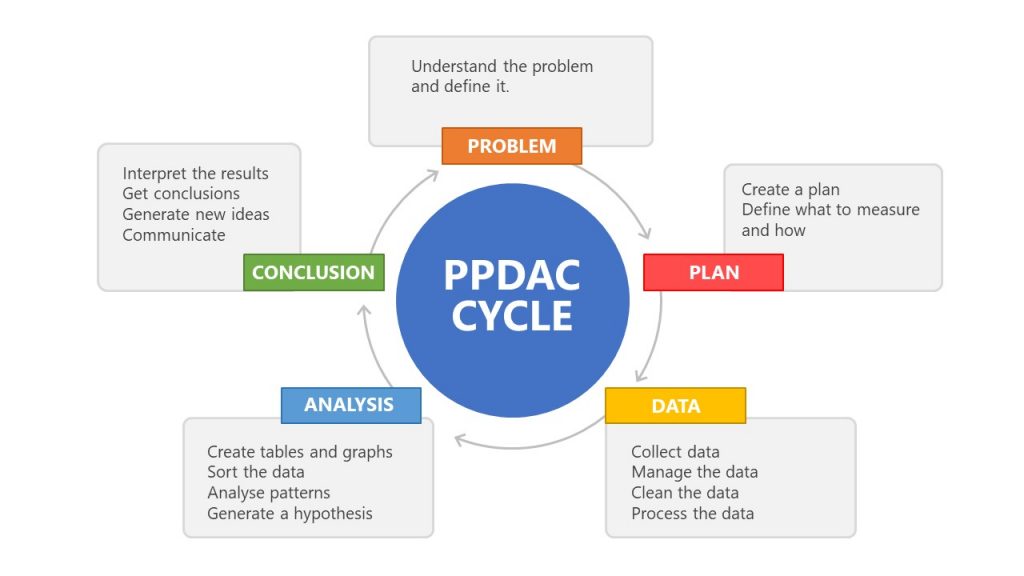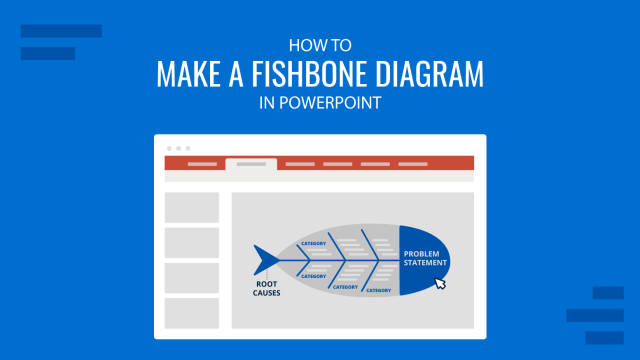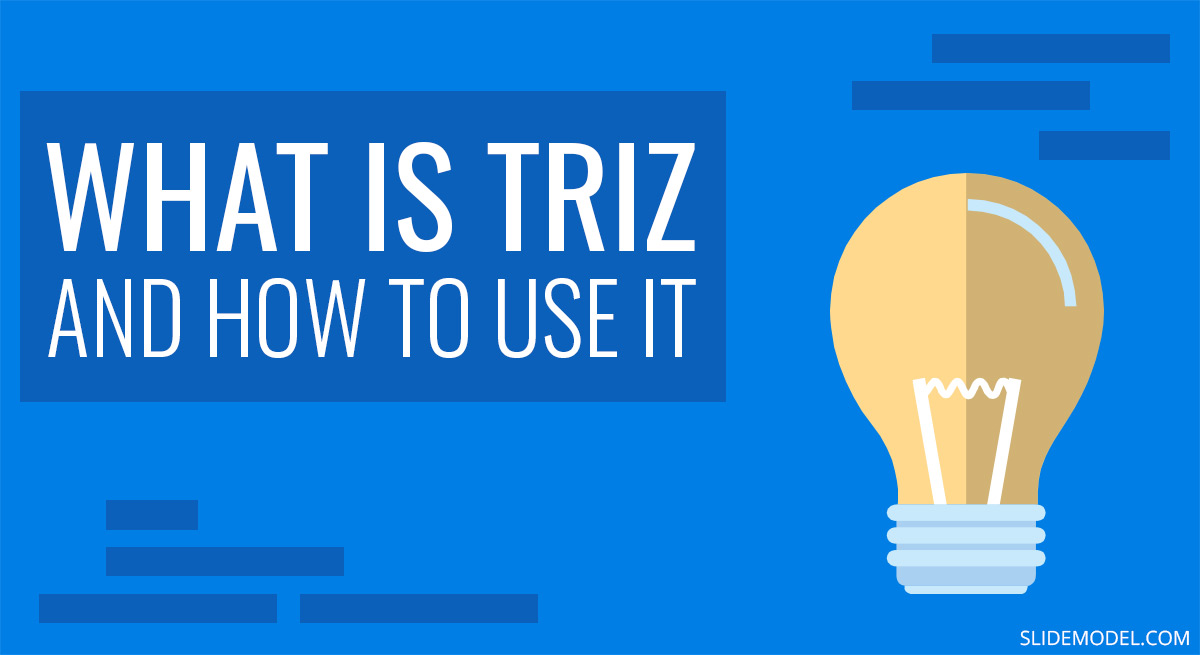
There are a number of problem-solving techniques and methodologies, including brainstorming, root cause analysis, and 5 whys analysis. We covered these methods in a previous post, in which we provided you with 5 Problem Solving Strategies. While the mentioned before can be effective for problem-solving, there is a strategy that goes a step further applying logic, aided by data and research. This strategy is known as TRIZ.
What sets TRIZ apart from other methodologies of its kind is that it provides 40 principles and 76 standards which can enable you to put your problem in a box, and match a solution to resolve it.
History of TRIZ
Genrich Altshuller and his colleagues developed TRIZ. Altshuller was a science fiction author and inventor; he began to work on TRIZ in 1946. For many years TRIZ was not practiced outside the Soviet Union.
Altshuller worked at the Caspian Sea fleet from the Soviet Navy, more specifically, the Inventions Inspection department. He believed that there were “contradictions”, which occurred when improving a parameter negatively and impacted another. This, according to Altshuller, required inventive solutions. His work was briefly interrupted due to his arrest in 1950. He was sentenced to 25 years due to the letters he wrote to Stalin, top government officials, and newspapers, criticizing some decisions made by the Soviet Government. He resumed his work after he was freed in 1953, after the death of Stalin.
The first paper on TRIZ was published in 1956, and Altshuller expanded his work across the USSR till the 1980s. After the disintegration of the Soviet Union, the concept caught up in other countries, thanks to Soviet emigrants reaching other countries. In 1995, the Altshuller Institute for TRIZ Studies at Boston was established in the United States.
TRIZ has resulted in the birth of hundreds of thousands of inventions by being the base of extensive research across different fields.
What is the TRIZ Method for Problem Solving?
TRIZ is a Russian acronym for “teoriya resheniya izobretatelskikh zadatch“, which translates in English as the “theory of inventive problem solving“.
Altshuller lamented that while sailors had maps, the same cannot be said for inventors. Therefore, he developed a methodology that codifies creativity principles forming the basis of the invention. In other words, TRIZ offers generalized solutions for generalized problems. Consequently, they can be matched to your issue, because the problem you face has likely been faced by someone else previously. Applying the solution used back then, and adapting it to your problem, you can reach a solution.
TRIZ is widely used in design engineering, process management and the development of products. Some of the world’s most renowned companies that have used TRIZ in projects include Ford, General Electric, Samsung, LG, Intel, Kodak, Procter & Gamble, Motorola, HP Rolls-Royce..
In 2003, Samsung had 50 patents owing to TRIZ and saved $100 million the following year due to a TRIZ project.
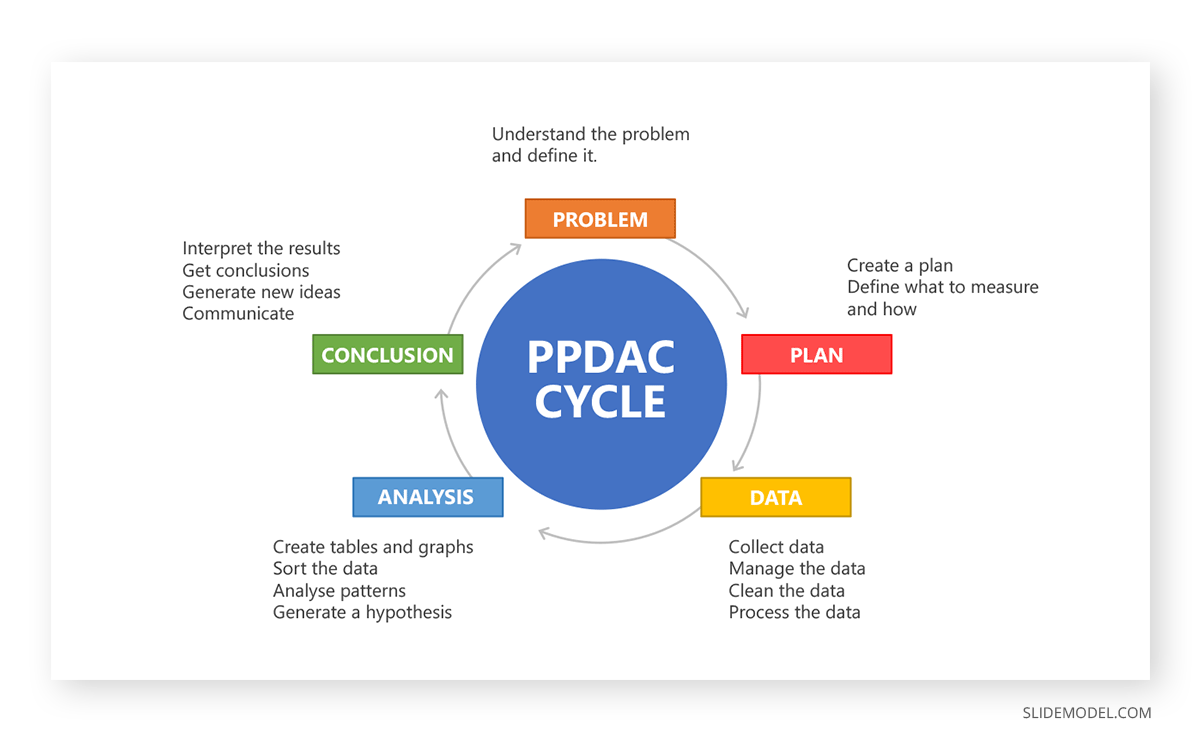
Explanation of the TRIZ Concept by Genrich Altshuller
The video below shows Genrich Altshuller explaining the concept behind TRIZ to students.
Central Concepts of TRIZ
Let’s explore the two central concepts associated with the theory of inventive problem solving, i.e. generalizing problems and solutions & contradictions.
Generalizing Problems and Solutions
The basic concept behind TRIZ, based on research findings, implies that problems and solutions repeat themselves, they repeat across industries. These problems are contradictions that can be resolved using creative solutions. TRIZ is used for understanding these patterns of contradictions and solutions for developing new methods.
Problem Identification: Contradictions
The basic concept of TRIZ identifies contradictions as the primary issue related to a problem, and eliminating them can lead to a solution. Two categories of contradictions exist in TRIZ:
1. Technical Contradictions
Technical Contradictions occur when improving something leads to something else suffering from a negative effect.
Example 1: Processing power for a computer increases (good), but it uses hardware, making it bulkier (bad). .
Old computers were bulkier, with fewer features; however, overtime, innovation in hardware resolved this problem with smaller processors, with increased processing speed, incorporated in lightweight computers.
Example 2: A business customizes service for its customers (good); however, the service is now suffering from delays and a long waiting time for customers (bad).
Many businesses employ many methods to resolve such contradictions, such as using AI-powered online services, portals, and shopping carts to offer customized service, with an estimated delivery time.
2. Physical Contradictions
Physical Contradictions are inherent. An object or system might have requirements that are contrary, resulting in Physical Contradictions.
Example 1: An operating system should be complex so that it can offer many features to the end user; however, it needs to be easy enough to use without many command lines.
A primary example of this is the need for command lines in most Linux based operating systems. Many Microsoft based client and server operating systems resolve this contradiction by offering an easy to use Graphical User Interface or GUI. Easy search features also aid this within the OS.
Example 2: A cupboard should be large enough to accommodate many items but not take up too much space.
There are a number of cupboards which are either detachable or can be folded to free up space. Smart cupboards for instance, provide combined solutions for storing more items in less space.
Inventive Principles and Standard Solutions
There are 40 Inventive Principles and 76 Standard Solutions of TRIZ which can be used for resolving problems.
The 40 Inventive Principles of TRIZ
The database of TRIZ has a collection of user compiled resources. This open source database consists of 40 principles. These principles provide the basis for resolving problems. These principles include the following:
Segmentation, extraction, local quality, asymmetry, combination, universality, nesting, counterweight, prior counteraction, prior action, cushion in advance, equipotentiality, inversion, spheroidality, dynamicity, partial, overdone or excessive action, moving to a new dimension, mechanical vibration, periodic action, continuity of useful action, rushing through, convert harm into benefit, feedback, mediator, self-service, copying, inexpensive short life, replacement of a mechanical system, use pneumatic or hydraulic systems, flexible film or thin membranes, use of porous materials, changing the colour, homogeneity, rejecting and regenerating parts, transforming physical or chemical states, phase transition, thermal expansion, use strong oxidisers, inert environment and composite materials.
Example: The first principle in the list, called “segmentation”, proposes breaking down objects into independent parts. This might include manufacturing an object so that it becomes easier to disassemble or use segmentation to resolve a technical issue. This might be done by using a trailer and truck instead of one large truck or by designing cubicles for an open plan office to enable easy reshuffling of the office layout according to need.
For more details, see these 40 TRIZ Principles with detailed explanations.
76 Standard Solutions of TRIZ
There are 76 Standard Solutions which were compiled by none other than Genrich Altshuller and his comrades over ten years between 1975-1985. These standard solutions are categorized in five broad categories.
1. There are 13 standard solutions for “improving the system” with little or no change.
2. There are 23 standard solutions for “improving the system” by changing the system.
3. There are 6 standard solutions for “system transitions”.
4. There are 17 standard solutions for “detection and measurement”.
5. There are 17 standard solutions for “simplification and improvement”
For more details, see these 76 Standard Solutions with examples.
Applying TRIZ for Problem Solving
If you wish to use TRIZ for problem-solving, you can use the following steps to resolve a problem.
1. Define the Problem: You can get started by defining the problem. You can assess if the issue suffers from a Physical or Technical contradiction.
2. Find the TRIZ Generalized Problem to Match your Problem: You can match the generalized problem to match your issue. Since problems are often repeating themselves across industries and sciences.
3. Find the Generalized Solution to Solve the Generalized Problem: You can match the generalized problem to a generalized solution to see how it resolved the former.
4. Use the Identified Solution to Resolve Your Problem: You can use the generalized problem and its generalized solution as an example and adapt it to your specific issue to resolve it.
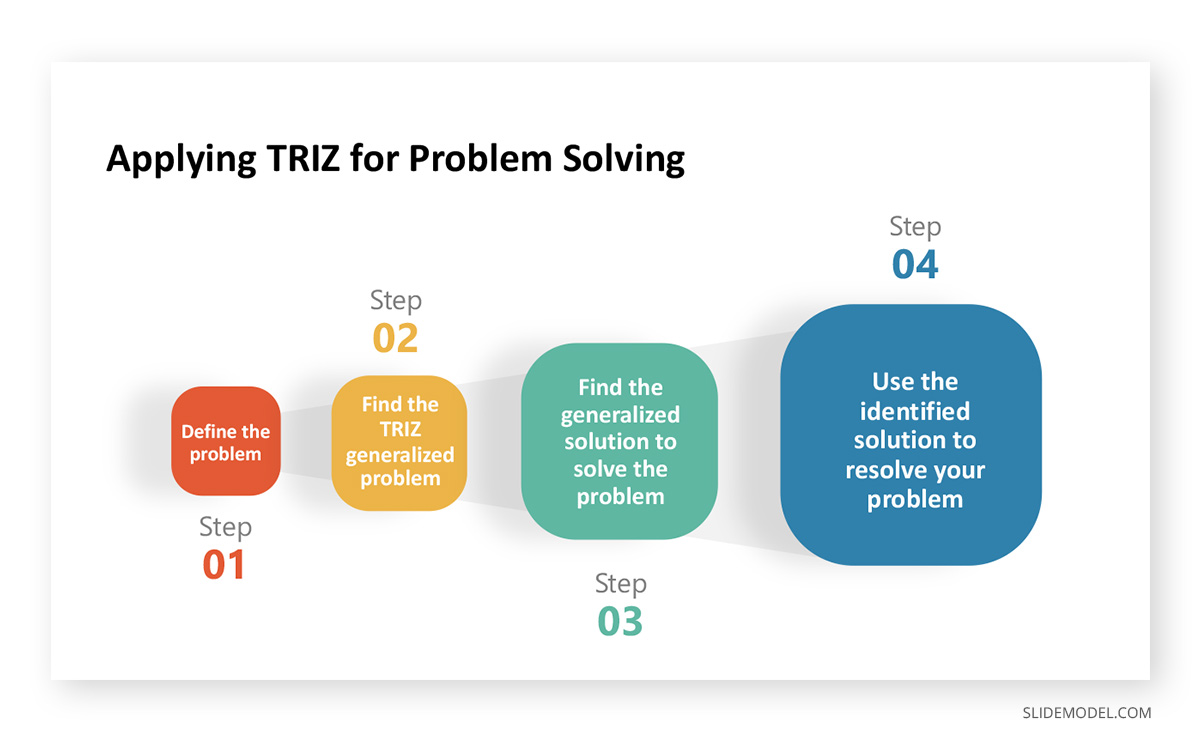
How to Present a TRIZ Solution in 4 Steps
Do you want to present your TRIZ solution in the form of a PowerPoint presentation? You can use our 4 step guide mentioned below to present a TRIZ solution.
1. Present the Problem in a Single Slide: You can start by presenting a problem in the form of a single slide. This can come after an introductory slide, with the presentation title and the presenter’s name. Alternatively, you can transform the opening slide in a manner that it introduces the topic and also explains the problem. If your audience is new to TRIZ, you might need to explain the concept in a slide prior to discussing how a TRIZ solution might be suitable for it.
2. Compare a Suitable Generalized Problem with a Generalized Solution: You can create a comparison slide to compare a suitable generalized solution to a generalized problem that matches your issue. This can also be a good time to discuss the nature of the contradiction (physical or technical).
3. Explain How the Generalized Solution can be Adapted: The third slide should be focused on how the generalized solution can be adapted to your specific issue. You can use bullet points to discuss the basic elements of the generalized solution’s adaptability for your specific issue. Depending upon the nature of the problem, you can focus on the solution using 1-3 slides.
4. Add a Summary to Conclude the Presentation: You should summarize your TRIZ solution in the form of a closing slide. This should be brief, with a general explanation of the topic, with ideally some focus on the solution.
Using the 4 step guide above, you can present a TRIZ solution within just 4-8 slides.
Final Words
The theory of inventive problem solving can help resolve a wide range of problems across a variety of fields. Using TRIZ can be a bit complex for people who might not have a scientific background of some sort; however, looking at some of the basic principles alone can help anyone benefit from TRIZ. It isn’t necessary that everyone uses TRIZ on their own. For example, a project or marketing manager can send recommendations to a relevant department to request engineers and designers to look at the possibility of incorporating features that can help reduce project costs or improve a product’s marketability.
The 40 TRIZ Principles alone are enough to provide a range of ideas even to newbies to look for a possible solution to a ‘contradiction’ they may be dealing with. Be it segmentation, extraction, changing the colour, homogeneity or self-service, inexpensive short life or replacement of a mechanical system. Even behind complex TRIZ principles, the simple ideas have ideas that can be used for resolving problems with creative solutions.
